Key takeaways:
- Understanding portion sizes is vital for a healthy diet; visual cues can help better gauge serving sizes.
- Balanced meals—including a variety of food groups—contribute to overall health and satisfaction while curbing cravings.
- Mindful eating practices, such as savoring food and minimizing distractions, enhance meal enjoyment and promote better digestion.
- Adopting smaller plates and measuring portions can psychologically influence satisfaction and reduce overindulgence.
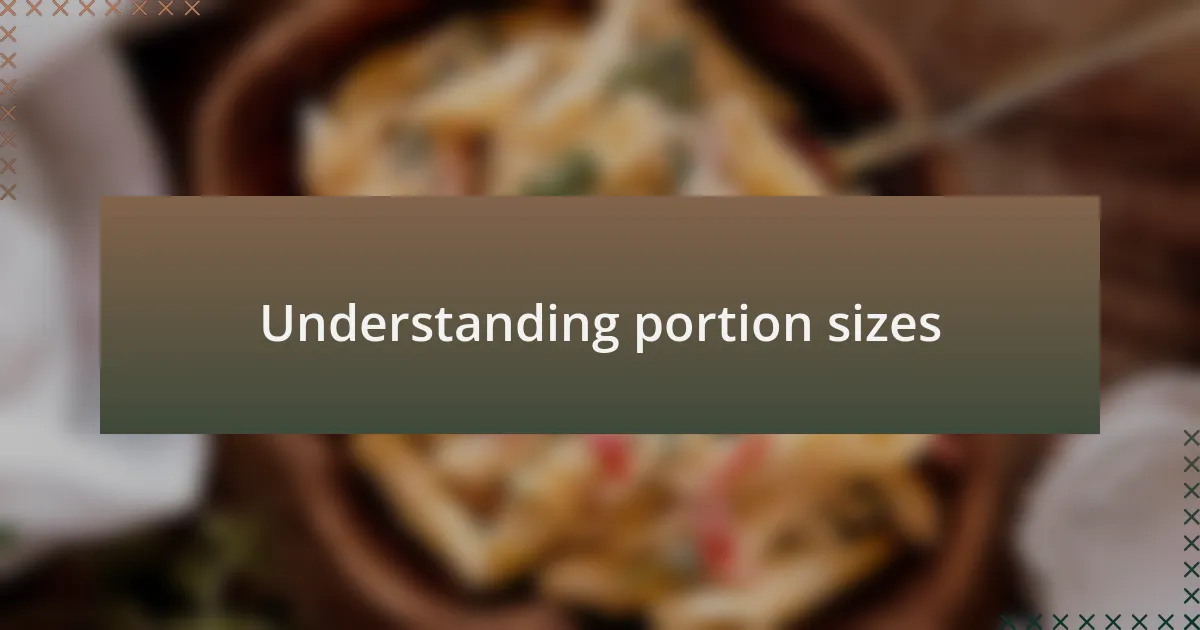
Understanding portion sizes
Understanding portion sizes is crucial for maintaining a healthy diet, yet many of us have different perceptions of what a proper serving should look like. I still remember my first experience dining out and being overwhelmed by the large plates—was I supposed to eat it all or leave some behind? It took time for me to realize that portion sizes in restaurants often surpass what is nutritionally recommended.
When I started measuring my portions at home, I realized how distorted my view had become over time. For instance, a “normal” bowl of pasta in my mind had ballooned to sizes that would fill two or even three people. Have you ever felt guilty for not finishing your plate? Learning to recognize what a true serving size looks like helped me appreciate the quality of my meals instead of focusing solely on quantity.
One effective way I found to grasp portion sizes is by using visual cues, such as comparing a piece of meat to the size of my palm or recognizing that a serving of carbs is roughly the size of my fist. Each time I made these comparisons, I felt more empowered in my choices. Don’t you find it liberating to understand what your body truly needs? This newfound insight transformed my relationship with food, making me more attuned to hunger cues and less influenced by external pressures.
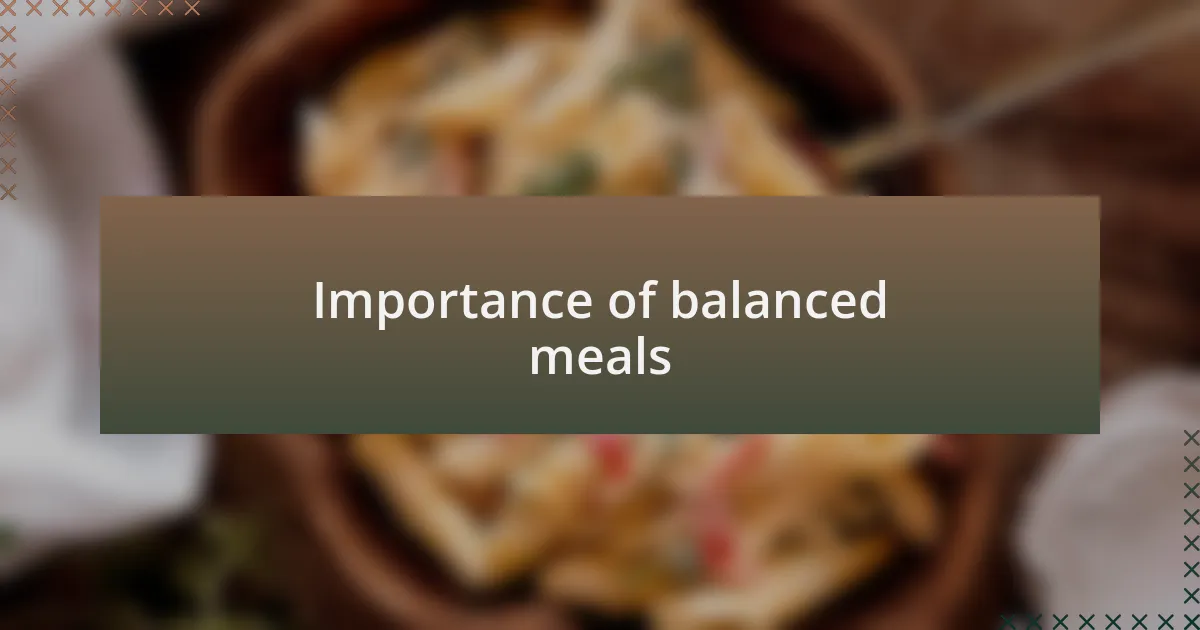
Importance of balanced meals
Balanced meals are essential for overall health because they provide the nutrients our bodies need to function optimally. I’ve often found that when I prioritize variety on my plate—incorporating fruits, vegetables, proteins, and whole grains—I feel more energized throughout the day. Have you ever noticed how a colorful plate can boost your mood?
One time, I experimented with a balanced meal plan for a week, and the difference was remarkable. I felt satisfied after meals, which helped curb those pesky cravings that usually linger between meals. It dawned on me how crucial balance is—not just in macronutrients, but also in feeling full and content without the urge to snack mindlessly later on.
Moreover, understanding the importance of balanced meals fosters better long-term habits. I now aim for meals that nourish me, not just fill me. Isn’t it enlightening to realize that what we eat directly impacts our wellbeing? Once I embraced this mindset, making healthier choices became a natural part of my lifestyle rather than a chore.
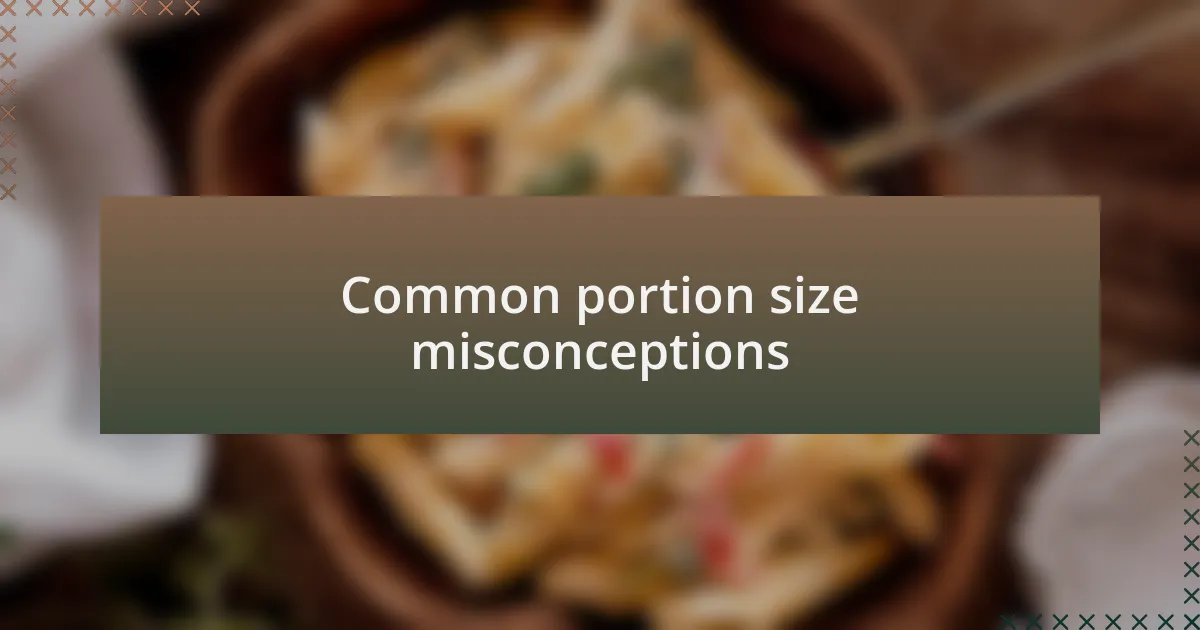
Common portion size misconceptions
One prevalent misconception I’ve encountered is that larger plates lead to larger portion sizes. I used to think that filling my plate completely was necessary to feel satisfied. However, I learned that using smaller plates often tricks my mind into thinking I have a full meal, helping me eat less without feeling deprived. Have you ever felt that satisfaction from a nicely arranged smaller plate, too?
Another common belief is that healthy foods are always low in calories, leading people to underestimate how much they can eat. I’ve found myself munching on what I thought were ‘guilt-free’ snacks, only to realize later that those portions added up quickly. It’s a reminder that just because something is deemed healthy, it doesn’t mean I can mindlessly consume it.
Finally, there’s this idea that a single serving is a rigid guideline. From my experience, serving sizes can vary significantly based on individual needs and activity levels. I remember a time when I followed standard servings strictly, but it didn’t account for my active lifestyle. Paying attention to my hunger cues has helped me adjust my portions intuitively, leading to a more balanced relationship with food.
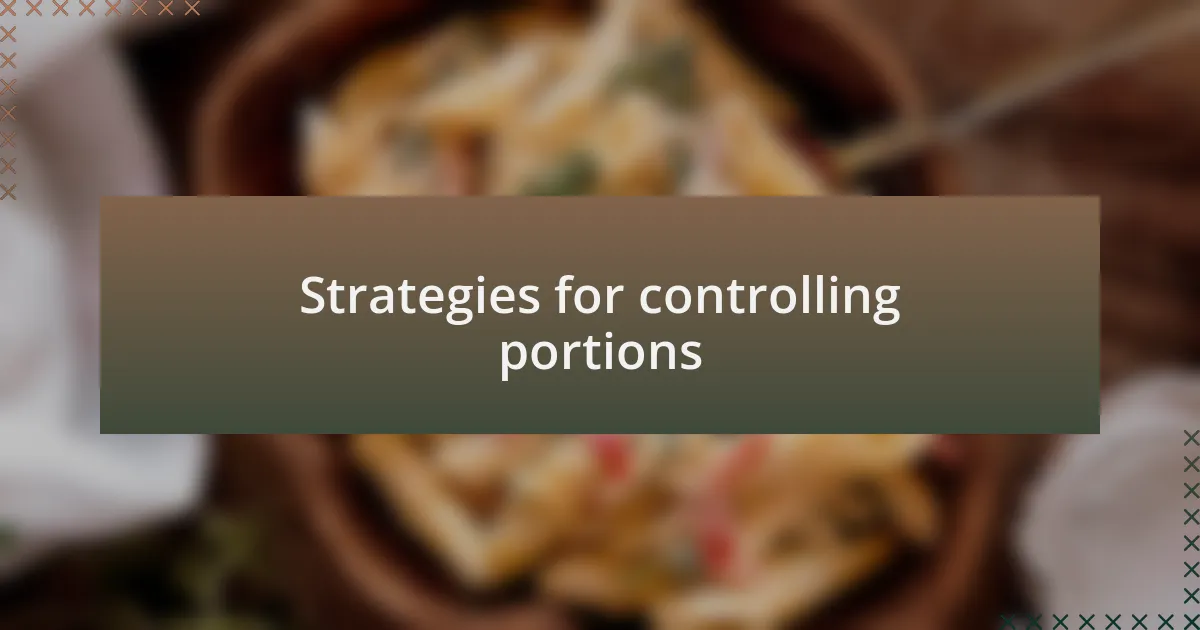
Strategies for controlling portions
One effective strategy I’ve adopted for controlling portions is using measuring cups and spoons. At first, I thought this was tedious, but I quickly realized that it helps create a visual reference for portion sizes. Have you ever poured a bowl of cereal only to find it’s way more than one serving? Taking the time to measure out food made me more aware of what I was consuming, which has been a game changer for my eating habits.
Another approach that’s worked for me is practicing mindful eating. I often find myself rushed during meals, but when I slow down and savor each bite, I notice that I feel satisfied with less food. It’s incredible how much joy I can find in simply paying attention to the flavors and textures. Have you tried this technique? I can vouch for how transformative it can be when I intentionally focus on my meal rather than getting lost in distractions like my phone or television.
Lastly, I’ve started to use the “plate method,” where I fill half my plate with vegetables, a quarter with protein, and a quarter with grains. This method not only visually appeals to me, but it also promotes a balanced meal without the risk of overloading on one type of food. I remember the first time I tried it—I felt full but not stuffed, and that was a major breakthrough for me. Have you explored your own methods for balancing your plate? It can really help reshape your ideas about portion sizes in a positive way.
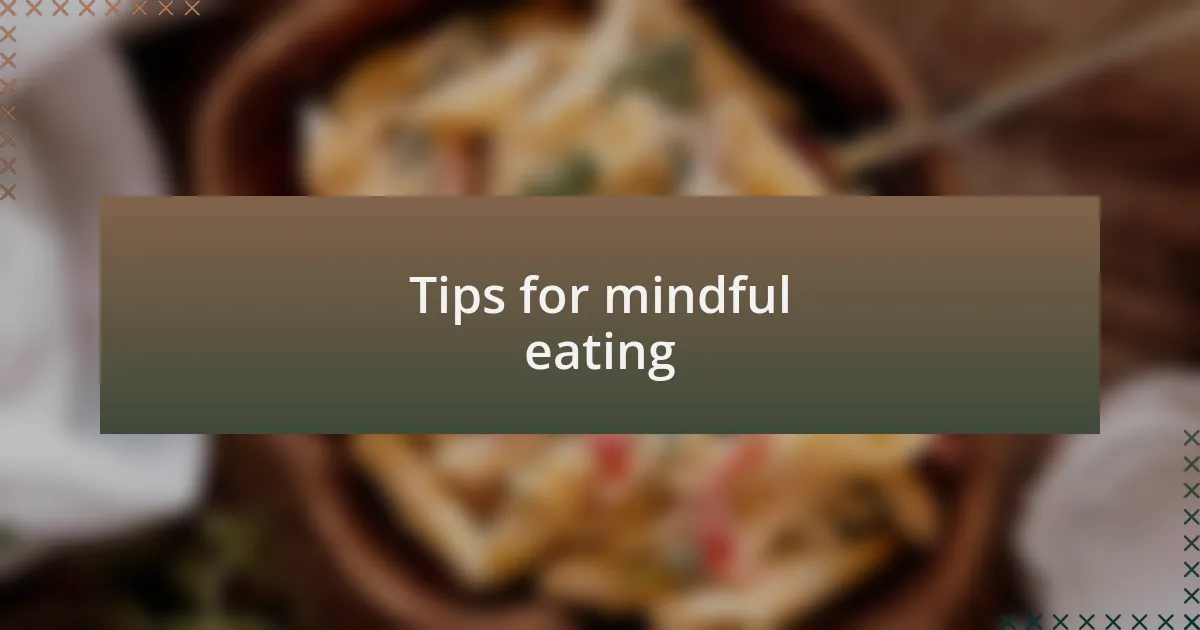
Tips for mindful eating
Mindful eating starts with being fully present during meals. I often catch myself distracted, thinking about my to-do list or scrolling through my phone. When I consciously set aside those distractions and focus on my food, I find that each bite becomes an opportunity to enjoy flavors and textures. Have you ever noticed how much more satisfying a meal can be when you truly pay attention to it?
Another helpful practice I’ve embraced is taking smaller bites and chewing more thoroughly. At first, it felt a bit awkward, almost like I was prolonging my meal unnecessarily. However, I discovered that savoring each bite allows my body more time to signal when it’s full. How often do we eat so quickly that our body doesn’t catch up? I’ve found this technique not only enhances my eating experience but also prevents that uncomfortable bloated feeling I used to struggle with.
Lastly, I recommend setting a designated eating area. I once had a habit of munching on snacks while working, but I realized it led to mindless eating and snacking way too much. Now, I allocate time to sit down at the table, enjoying my food in a dedicated space. It creates a boundary that helps me appreciate my meals more fully. Have you tried establishing an eating zone? It’s amazing how this simple change can transform our relationship with food.

My personal journey to balance
Finding balance in portion sizes was a journey that evolved over time for me. I remember one particular dinner where I filled my plate without much thought, only to feel uncomfortably stuffed halfway through the meal. It was a wake-up call, prompting me to reflect on how my portion choices affected my overall enjoyment and satisfaction. Have you ever felt that post-meal heaviness, only to realize it stems from larger portions?
I started experimenting with smaller plates, thinking about the psychological effect smaller dishes have on our perception of fullness. The first few meals felt like a challenge; doubts crept in as I worried I wouldn’t feel satisfied. Yet, I soon realized that focusing on quality rather than quantity led to a much richer experience. I learned to appreciate the flavors of my food, savoring each bite like a mini celebration on my palate. Isn’t it fascinating how our mindset can impact our relationship with food?
Moreover, I began to tune into my body’s cues more intently. I encountered a pivotal moment during a lunch where I paused after halfway. I asked myself if I was still hungry or if I was merely eating out of habit. This shifted my perspective. Now, I trust my body to guide me, allowing me to embrace a satisfying meal without overindulging. Doesn’t listening to our instincts about hunger and fullness feel empowering?

Lessons learned from my experience
I once found myself at a family gathering, a feast laid out before me. As I surveyed the spread, I realized I was about to repeat a habit from my past—filling my plate to overflowing as if it were a rite of passage. This time, however, I paused and chose a smaller plate. That small shift transformed my experience; I enjoyed the flavors without the pressure to clean my plate. Have you ever noticed how a mindful choice can flip the entire narrative of a meal?
Another lesson hit me during a busy week. I often grabbed snacks mindlessly while working. One afternoon, I decided to measure out my portions instead of indulging straight from the package. To my surprise, just seeing my snack in a bowl made me feel satisfied. It was a simple yet profound reminder: portion control doesn’t rob us of pleasure; it enhances it. Have you felt that moment when clarity dawns amidst the chaos?
A key turning point came when I started practicing gratitude for my meals. After serving myself my usual portion, I took a second to appreciate the vibrant colors and aromas on my plate. By expressing gratitude, I felt more satisfied and less inclined to overeat. Isn’t it remarkable how a shift in mindset can transform not just our plates, but our hearts?